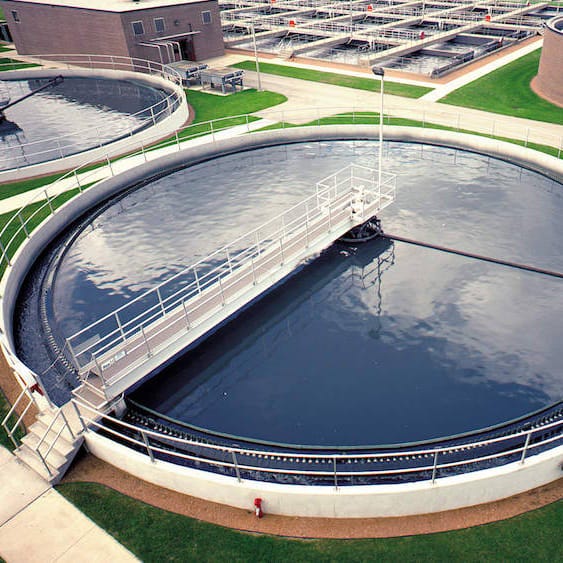Odour problems generating from wastewater systems is one of the critical behavioural phenomena. Research says that most of the sewage treatment plants in India operate without odour control systems.
Do the untreated ones release environmental problems? What happens, if the odour remains untreated for life?
Wastewater or sewage is the outcome of water along with suspended material. The solid material consists of detergents, chemicals, oils, plastics, metals, food leftover, sand etc. The main sources registered is that of municipal, industrial, domestic and agricultural industries.
Hundreds of wastewater process that encompasses accumulation, storage and treatment are responsible in generating ‘odorous gases’ that further leads to the abatement of the life span of workers, health standards of local residents and poisonous odour around the planet.
This chain of wastewater networks disperses pungent smell, needs effective odour control solutions in wastewater plant treatment. Though there are innumerable parameters to monitor natural odour effluents generating sewage, sludge and industrial wastewater and their nuisance are intuitive to industries.
An Immediate Action to Eliminate Odour Problems
Odour emanation in the wastewater system, sewage & sludge treatment process is an ongoing battle, if not terminated effectively. When sewage & sludge become passive because of the depletion of oxygen, it gives rise to evil conditions, resulting in noxious compounds. Such odorous pollutants have rotten egg odour and often start producing corrosive gases. Gases trapped under locked systems destroy the working process of machines, equipment and incurs a huge loss to the business.
However, it is difficult to calculate the quantity and concentration of gases which requires immediate treatment. To combat this issue, various odour control technologies are available to keep odour at bay.
Odour control Treatments in Wastewater
Widely requested odour control systems are characterized into 3 broad technical categories. These categories include Activated carbon Adsorption, Biological Oxidation, Chemical Scrubbing. They can be either installed and used as in single-stage technology or combined-staged technology.
The second foremost thing is to check on whether the idea behind odour control in wastewater treatment, is for the future or to resolve the existing odorous gases emerging due to industrial, municipal waste.

There are plenty of proven technologies manufactured in India, such as adsorption media, carbon filters and a wide range of dry & wet scrubbers, applied in different markets, both for industrial and commercial use only to deal with odorous gases in wastewater systems and Industrial Facilities.
Some of the state-of-the-art technologies are mentioned below;
ü Toxic gas purifier odour control system
Equipment to collect and treat odorous gases emerging from an enclosed area or facility. Such systems are employed at the wastewater plants, pump stations where the gases are trapped inside an enclosed surface area. They are competent to collect and take a charge of controlling odour and corrosion risks.
ü Biofiltration
Biofiltration is the process of using microorganisms in a medium to remove or oxidize odorous compounds. It is one of the effective and accepted odour control technology in wastewater treatment plants throughout the world. The A-1 biological oxidation method is competent to eliminate odour causing compounds like hydrogen sulphide, ammonia and volatile organic compounds.
Biological oxidation technologies are divided into three processes, named as Biofilter, Bio-Trickling filter and Bio-scrubber. There is a slight difference in utilization and type of microorganism that grows in the aforementioned filters.
ü Wet scrubbers
Wet scrubbers — the most adopted technology in wastewater odour control. It is implemented to treat any water-soluble contaminant. Moreover, wet scrubbers, besides handling hydrogen sulphides and other VOCs in the airstream, are effective for ammonia removal also. This is one of the best chemical processes in order to break down the odour attacks in industries, wastewater treatment plants etc. Wet scrubber technology allows you to install a multi-staged or a combined form of the system; a system with two or more technologies together.
ü Carbon Adsorption System
Carbon adsorption system, where the air stream cross over a carbon-based adsorption bed, which is a larger surface area, to trap the contaminants by adsorbing them on their surface which can later be either treated or just simply discarded away.
This is the simplest of all the wastewater technologies discussed. They use dry media systems which contain dry substances like silica, alumina, activated carbon filters etc. Various odour control manufacturers in India, customize a combined form of activated carbon with other technology to remove contaminants.
The broad range of technologies; from single to multi-staged, either to choose from the simplest yet effective activated carbon or complex yet advanced chemical scrubbers. AQOZA comprehend, customize and install a smart-engineered system to meet all the odour control business needs.

Comments
Post a Comment